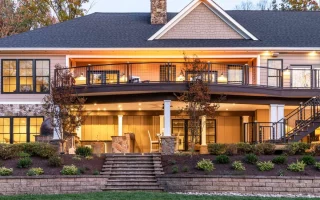Discover hidden treasures in abandoned houses with a keen eye and an eye for negotiation. There’s something undeniably alluring about these forgotten structures, standing as silent reminders of past lives and untapped potential. Whether you’re an investor looking for your next project or want to restore history, negotiating the purchase of an abandoned house is a thrilling journey that requires equal parts research, strategy, and determination.
Understanding the Appeal of Abandoned Houses
A certain allure surrounds abandoned houses, beckoning to those with an adventurous spirit and an appreciation for the mysteries of the past. These forgotten dwellings hold stories within their crumbling walls – tales of dreams gone awry, lives once lived, and memories left behind. The appeal lies in the opportunity they offer: a chance to revive these neglected spaces into something beautiful and meaningful. For some, it’s about breathing new life into history itself. Abandoned houses often carry architectural details and craftsmanship that harken back to bygone eras. From ornate moldings and vintage fixtures to grand staircases and intricate woodwork, these relics speak volumes about the artistry of yesteryears.
Researching and Finding Abandoned Houses
Are you intrigued by the mystery of abandoned houses? Something is captivating about these forgotten structures, with their cracked windows and overgrown lawns. If you want to purchase an abandoned house, the first step is researching and finding one that catches your eye. Start your search online by visiting real estate websites or property listing platforms. These platforms often have filters allowing you to search for abandoned properties specifically. Additionally, consider joining forums or social media groups dedicated to urban exploration or real estate investing – fellow enthusiasts in these communities may have valuable leads on abandoned houses. Another method is to drive around neighborhoods known for having vacant properties. Look for signs of neglect, such as boarded-up windows or unkempt yards. Don’t be afraid to approach locals who might have information about nearby abandoned houses – they could provide valuable insights.
Assessing the Condition of an Abandoned House
One of the most crucial steps is assessing its condition. After all, you want to avoid investing in a property requiring extensive and expensive repairs. So, how can you determine the state of an abandoned house? Take a good look at the exterior. Is the roof intact, or does it have missing tiles? Are there any visible cracks on the walls? These are signs that may indicate structural issues. Additionally, check for any signs of water damage, such as mold or mildew. Next, venture inside and inspect each room carefully. Pay attention to the flooring – is it warped or damaged? Look for signs of pests like droppings or chewed wires. Check if there are functional utilities such as electricity and plumbing.
Negotiating a Fair Price for the Purchase
Negotiating a fair price for the purchase of an abandoned house can be both exciting and challenging. It requires strategy, research, and effective communication skills. I’ve compiled some helpful tips to help you navigate this process successfully. Gather as much information as possible about the property’s market value and condition. This will give you a solid foundation when negotiating with the seller. Consider location, size, amenities, and any repairs or renovations needed. When making an offer, start with a reasonable but lower-than-asking price. Remember that abandoned houses often require significant investment to meet livable standards. During negotiations, you can benefit from utilizing this information to your advantage.
Dealing with Legal and Financial Aspects
Dealing with the legal and financial aspects of purchasing an abandoned house can be daunting. Before diving into negotiations, it’s important to ensure that you have a clear understanding of the legalities involved. This means researching local laws and regulations related to property ownership and abandonment. Once you’ve done your homework, it’s time to consider the financial implications of buying an abandoned house. Assessing the potential costs of renovation and restoration is crucial for determining a fair price. It’s also important to factor in any outstanding taxes or liens on the property that may need to be resolved before completing the purchase. To navigate these complex legal and financial waters, seeking professional advice is highly recommended. Engaging with a real estate attorney or agent specializing in distressed properties can provide invaluable guidance throughout the process.
Renovating and Restoring an Abandoned House
It’s a chance to breathe new life into a forgotten home, transforming it from a dilapidated shell into a stunning masterpiece. But make no mistake, this process is not for the faint of heart. You need to assess the extent of the renovations required. Is it just cosmetic updates, or do structural issues need addressing? This will determine your budget and timeline for the project. Next comes planning. Create a detailed renovation plan outlining all the necessary steps and materials needed. Consider hiring professionals such as architects or contractors specializing in restoration projects to ensure everything is done correctly.
what is real estate negotiation?
Real estate negotiation is the art of reaching a mutually beneficial agreement between buyers and sellers in the property market. It involves thoughtful communication, strategic decision-making, and skilled persuasion to secure the best possible deal for both parties. Successful negotiation in real estate requires a deep understanding of market conditions, property values, and legal considerations. It involves assessing factors such as location, condition, financing options, and potential for renovation or development. As a buyer interested in purchasing an abandoned house, negotiating becomes even more crucial. It would help if you navigated through unique challenges, such as uncertain ownership status and potential issues with the property’s structure or maintenance.





